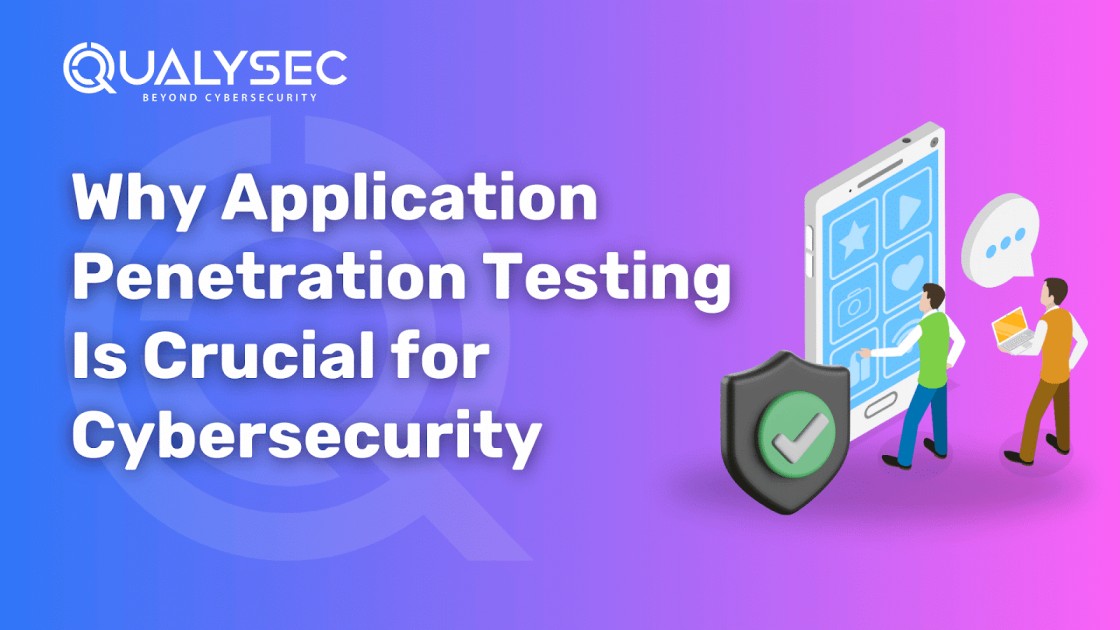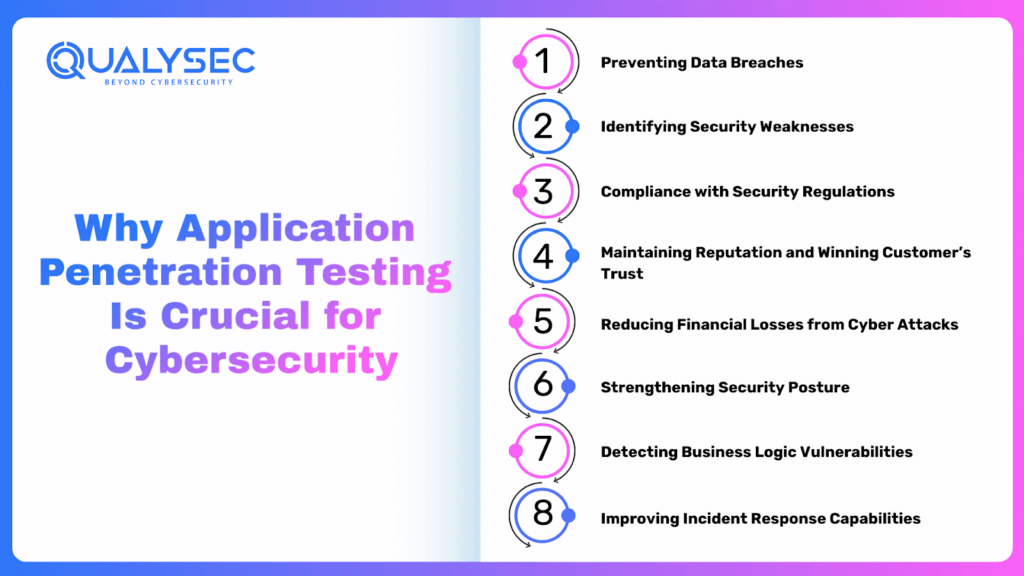Why Application Penetration Testing is Crucial for Cybersecurity
In this day and age, businesses and services cannot exist without applications, and yet they comprise prime cyber attacks. As cyber threats, data breaches, and vulnerabilities have been increasing with time, the need for securing applications from potential attacks has been imminent. Application Penetration Testing (APT) is where the first party comes in to help mitigate risks that security might face before malicious actors attack. Today we will discuss the reason why application penetration testing is apt for cybersecurity and secures the organization.
What is Application Penetration Testing?
Application Penetration Testing is a security assessment process used to determine the risks involved in such security risks and types of application Penetration Testing attacks to find out what can be called vulnerabilities or weaknesses in an application. Ethical hackers or security professionals use such tools and techniques to exploit weaknesses to aid an organization in detecting problems and fixing them in advance before an attacker. APT focuses on finding vulnerabilities such as:
- SQL injection
- Cross-site scripting (XSS)
- Broken authentication
- Security misconfigurations
- Insecure APIs
- Privilege escalation
- Business logic vulnerabilities
Why Application Penetration Testing Is Crucial for Cybersecurity?
Preventing Data Breaches
One of the primary reasons application penetration testing is necessary is to avoid a data breach. These cyber attackers attempt to access sensitive information such as personal details, financial data, or private secrets by taking advantage of application vulnerabilities. A successful breach can be extremely costly and not only that but it can also have a serious legal consequence. It is achievable utilizing penetration testing to reveal security vulnerabilities in a company to discover them in advance before malicious entities discover them.
Identifying Security Weaknesses
Applications are continuously exploited by hackers so they always look for exploitable weaknesses. However, without challenge, applications are left unsecured and vulnerable to attack as organizations fail to proactively test for security. As a result, application penetration testing can help security teams identify flaws such as SQL injection, cross-site scripting (XSS), insecure authentication, etc. Addressing these weaknesses so early means going ahead of the cybercriminals and therefore, the risk of exploitation.
Compliance with Security Regulations
Security assessment including penetration testing is mandated by the global regulatory bodies for the protection of data. To do so, organizations are required to undertake regular security tests to ensure they are protecting user data by GDPR, HIPAA, and all those standards, including ISO 27001. Complying with these regulations is very important since not doing so can lead to a very high level of fines and legal action.
Application penetration testing helps organizations whose business activities are subject to those compliance requirements as well as providing additional support for enterprise security efforts.
Maintaining Reputation and Winning Customer’s Trust
It is stated that a company’s reputation can be severely damaged in one single breach. Customers demand security, and with only a little compromise in security, trust and business benefits will be lost. A commitment to security is shown by regular penetration testing, which ensures customers and stakeholders that the organization takes seriously their data protection. Competitive industries are tough enough that good security posture can be a significant differentiator.
Reducing Financial Losses from Cyber Attacks
Ransom payments can incur substantial financial losses from payments of millions of dollars to fines, legal costs, and operational downtime. Penetration testing is an investment solution to mitigate these risks cost-effectively. Most of them understand that fixing vulnerabilities before they are exploited will prevent costly security incidents.
Strengthening Security Posture
Application penetration testing not only finds security vulnerabilities but also reveals the organization’s security architecture. It helps a business determine current security measures, develop an incident response strategy, and adjust security policies. It is preventive as it helps in the continuous improvement of cybersecurity resilience against emerging threats.
Detecting Business Logic Vulnerabilities
If you are using a penetration testing company, you are not getting automated security scans, you are getting the penetration test of the business logic vulnerabilities that attackers could use to manipulate the application workflow. In these cases, applications have their unique vulnerabilities, and understanding how the application operates requires a deep insight into that. The business logic flaws are identified and remediated to ensure business process integrity, as well as to hinder exploitation of financial or operational.
Improving Incident Response Capabilities
It is important to mention that penetration testing is a practical exercise to test the organization’s incident response strategy. Essentially, viewing how well a business security team detects, contains, and responds to cyber threats in real life is important. An approach like this lets organizations rehearse their incident plans, diminishing the effect of potential cyber incidents.
Steps Involved in Application Penetration Testing
APT has a systematic strategy to identify vulnerability. The key steps include:
Planning and Reconnaissance
- Set up scopes and objectives of the test
- Get information regarding the target application
- Find places for attackers to enter.
Scanning and Enumeration
- The security flaws should be scanned using automated scanning tools
- Find open ports, services, and where they might be vulnerable to a possible attack.
- Map the application’s attack surface
Exploitation
- Attempt to exploit identified vulnerabilities
- Start SQL injections, XSS attacks, authentication bypasses, etc.
- Pull information out of databases.
Post-Exploitation and Analysis
- Evaluate the extent to which successful exploits are utilized.
- Identify potential attack chains
- Identify document problems and suggest steps to remedy problem areas.
Reporting and Remediation
- Be able to provide a full report of vulnerabilities and exploits.
- Impose a mitigation strategy for security improvement.
- Help development teams to solve security issues.
Conclusion
Considering that cyber threats are evolving very fast, application penetration testing is not an option but a must during this phase. APT helps organizations obtain customer trust, prevent expensive cyber attacks, comply with regulations, as well as proactively detect and mitigate security risks due to the protection of sensitive data. The whole process of penetration testing is an investment for the better cybersecurity posture of an organization and a safer digital ecosystem for people and businesses alike.
As more and more businesses begin to develop web and mobile applications and the increasing reliance on them, it is time for businesses to place a high premium on penetration testing and take a proactive approach to security. The best action you can do now is, to begin with regular penetration testing of your security approach with cybersecurity experts.



3 thoughts on “Why Application Penetration Testing is Crucial for Cybersecurity”